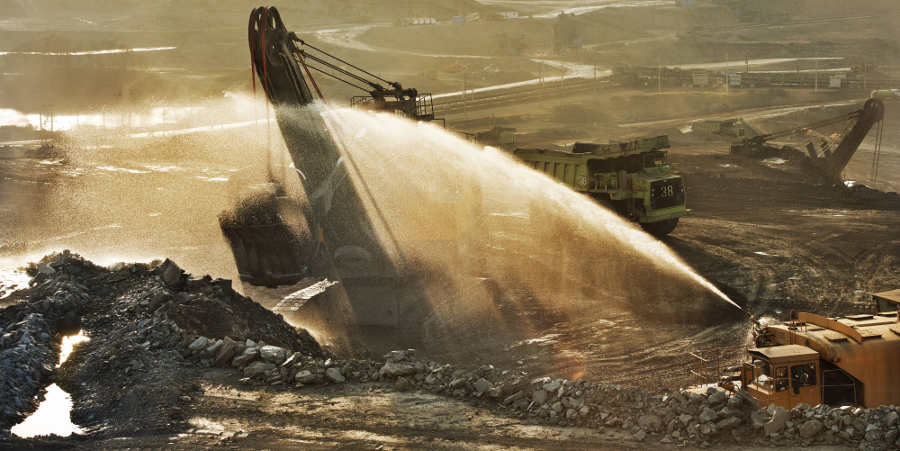Mining: Unearthing the Industry’s Foundations
Mining, the process of extracting valuable minerals and other geological materials from the Earth, has been a fundamental human activity since prehistoric times. This practice has evolved significantly over the millennia, shaping economies, cultures, and technological advancements. In this essay, we will explore the history of mining, its technological and economic contributions, and its role in propelling humanity to its current state of development.

The origins of mining can be traced back to the Stone Age, when early humans extracted flint for tools and weapons. Evidence of early mining activities has been found in the form of flint mines dating back to around 4000 BCE in Egypt. These early mines were simple, shallow excavations, yet they provided the necessary resources for survival and development.
As human societies evolved, so did their mining practices. The Bronze Age, which began around 3300 BCE, marked a significant advancement in mining technology. During this period, humans discovered how to extract copper and tin from the Earth and combine them to create bronze, a durable and versatile alloy. This technological leap facilitated the production of stronger tools and weapons, boosting agricultural efficiency and military prowess.
The classical period saw further advancements in mining technology and techniques. The Romans, in particular, were known for their extensive mining operations. They developed sophisticated methods, such as hydraulic mining, which involved using water to remove overburden and expose mineral veins. Roman mines, like those in Spain and Britain, were sources of precious metals, including gold and silver, which were crucial for their economy and expansion.
During the medieval period, mining continued to play a vital role in economic and technological development. The discovery of rich silver deposits in Central Europe in the 10th century, particularly in regions like Saxony and Bohemia, fueled the growth of mining towns and contributed to the rise of powerful trading networks. Innovations such as the introduction of water wheels to power mining operations and the development of better ventilation systems allowed for deeper and more efficient extraction of minerals.
The advent of the Industrial Revolution in the late 18th century marked a turning point in the history of mining. The demand for coal, iron, and other raw materials skyrocketed as industrialisation spread across Europe and North America. Coal, in particular, became the backbone of the industrial economy, powering steam engines, factories, and transportation networks.
The mechanisation of mining during this period brought about significant changes. Steam-powered engines and later, electricity, enabled miners to dig deeper and extract minerals more efficiently. The development of explosives and improved drilling techniques also revolutionised mining practices. These advancements not only increased production but also improved the safety and working conditions for miners.
The 19th and early 20th centuries saw the expansion of mining activities to new frontiers, including Africa, Australia, and the Americas. The discovery of gold in California in 1848 and in Australia in 1851 sparked major gold rushes, attracting thousands of prospectors and leading to the establishment of new settlements and economies. Similarly, the discovery of diamonds in South Africa in the late 19th century transformed the global diamond industry and had profound economic and social impacts.
In the modern era, mining has become a highly advanced and regulated industry. Technological innovations, such as automation, remote sensing, and computer modelling, have transformed mining operations. These advancements have increased efficiency, reduced environmental impact, and enhanced safety measures.
The economic contributions of mining to global development are immense. Minerals and metals are essential components of modern infrastructure, technology, and manufacturing. From the construction of skyscrapers and bridges to the production of electronics and renewable energy systems, mining provides the raw materials that drive industrialisation and technological progress.
The role of mining in economic development is particularly evident in resource-rich countries. Nations like Australia, Canada, and Chile have built robust economies around their mining industries. In Australia, for instance, mining contributes significantly to the national GDP and exports, providing employment opportunities and driving regional development.

While the benefits of mining are undeniable, it is essential to acknowledge its environmental and social impacts. Mining activities can lead to habitat destruction, water pollution, and soil degradation. The industry has also faced criticism for poor working conditions and exploitation of labour in some regions.
In response to these challenges, the modern mining industry has made significant strides in implementing sustainable practices. Environmental regulations, reclamation projects, and community engagement initiatives aim to mitigate the negative impacts of mining and promote responsible resource extraction. The concept of sustainable mining emphasises the need to balance economic benefits with environmental stewardship and social responsibility.
The history of mining is a testament to human ingenuity and resilience. From the rudimentary flint mines of the Stone Age to the highly advanced operations of today, mining has been instrumental in driving human progress. It has provided the raw materials necessary for technological advancements, economic development, and societal growth.
As we move forward, it is crucial to continue innovating and adopting sustainable practices in the mining industry. By doing so, we can ensure that mining remains a vital contributor to human progress while safeguarding the environment and communities for future generations. The journey of mining is far from over, and its potential to shape the future is as significant as ever.


Leave a Reply